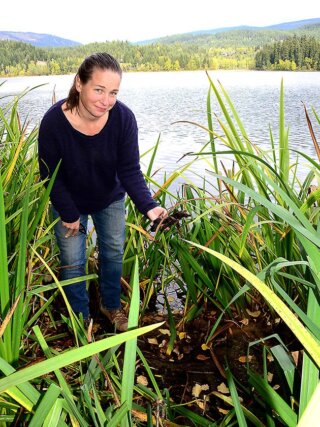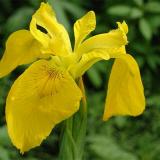Join us for a half day workshop to learn the latest in techniques for controlling invasive yellow flag iris.
Workshop Details:
Date: Tuesday September 1, 2020
Location: Creston Valley Wildlife Management Area, please meet in front of the Kootenay Columbia Discovery Centre
Address: 1760 W Creston Rd, Creston, BC
Time: 9:00AM-12
Register by clicking here
*In order to adhere to Covid-19 physical distancing guidelines each time slot has a limit of 8 people*
The Presenter:
The presenter of the workshop is Catherine Tarasoff, the owner of Agrowest Consulting Scientist and Adjunct Professor at Thompson Rivers University. Catherine’s consulting company specializes in research in the areas of invasive species, agriculture, and salinity.

What is Yellow Flag Iris?
Yellow Flag Iris is a “wet-footed” plant that grows in ponds, ditches, wetlands and other riparian areas. From May to July Yellow Flag Iris is easily recognizable, with a pale yellow flower that resembles a garden iris.

How did Yellow Flag Iris get here?
The invasive plant was introduced through the horticulture industry when gardeners planted it into their water gardens. It has now “jumped the garden fence” and ended up in natural areas causing environmental harm.
Why should it be controlled?
CKISS has listed Yellow Flag Iris as a priority action species in the region and must be controlled immediately. It is capable of invading new areas quickly because it can spread by seeds and rhizome fragments. Once established it out competes native plant species and ultimately disrupt an area’s ecosystem complexity. These disturbances result in reduced habitat suitability and support for wildlife – especially for breeding, staging, and migrating waterfowl. In addition, the plant can sicken livestock if ingested and can cause skin irritation in humans.

